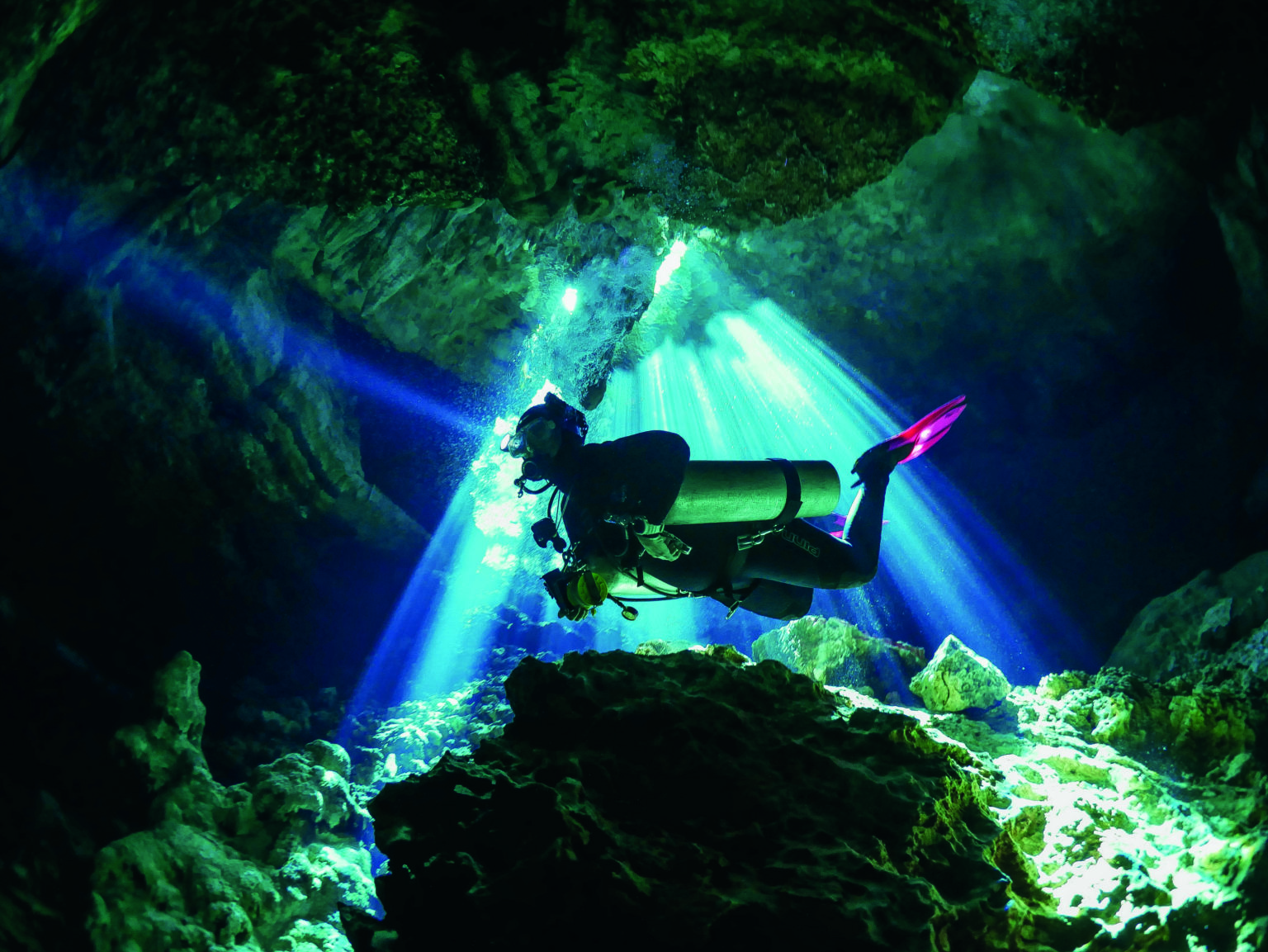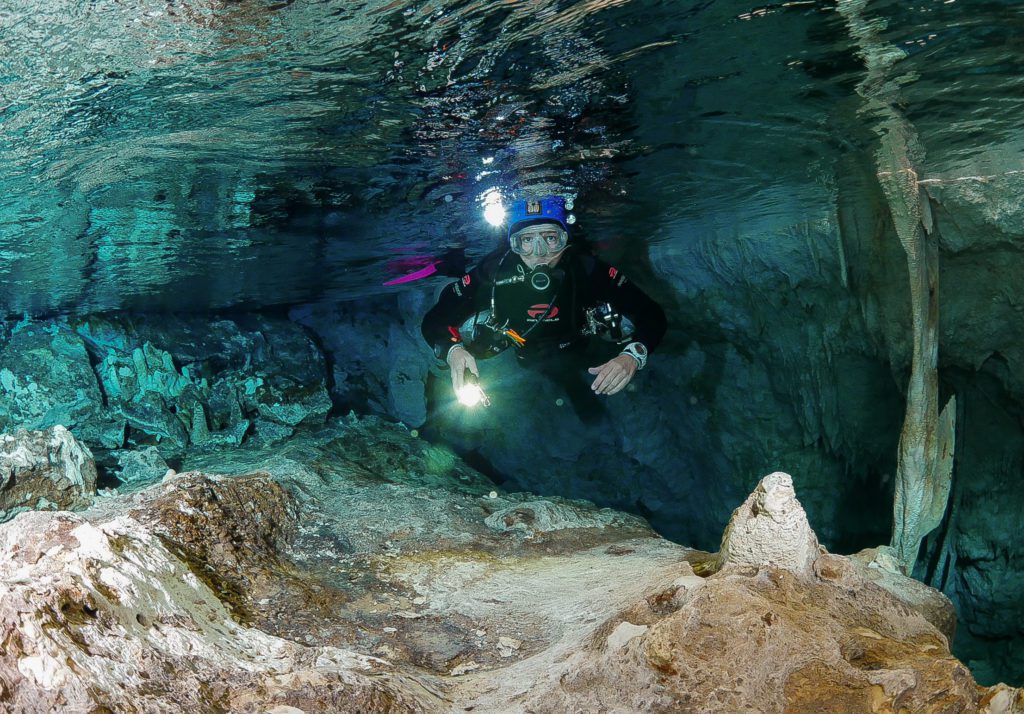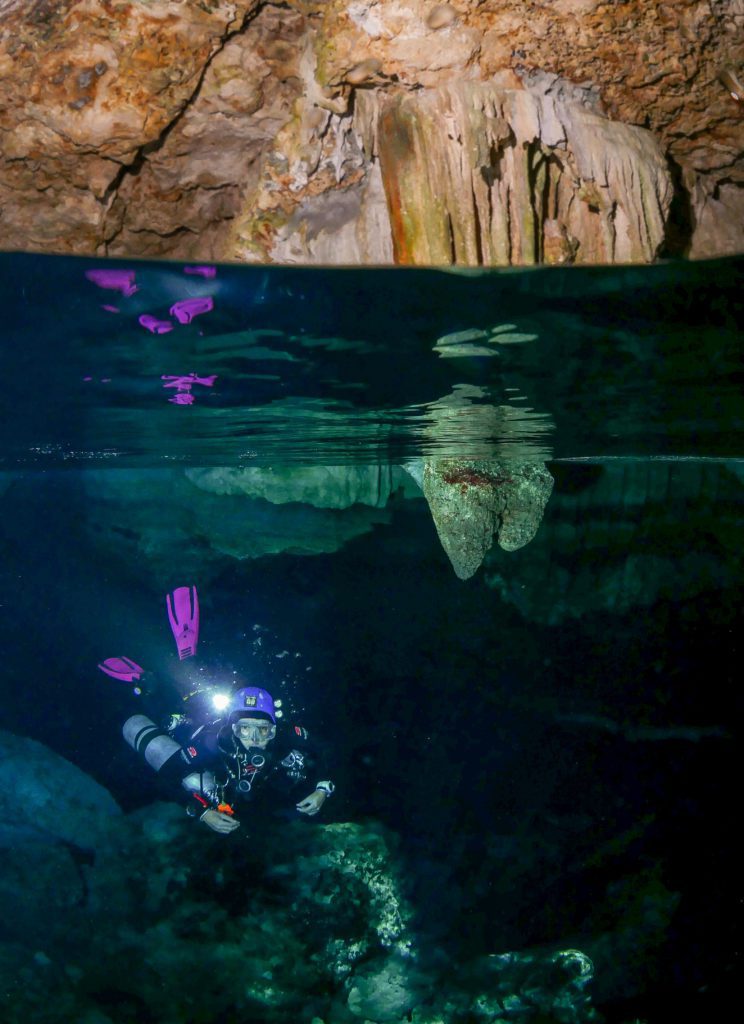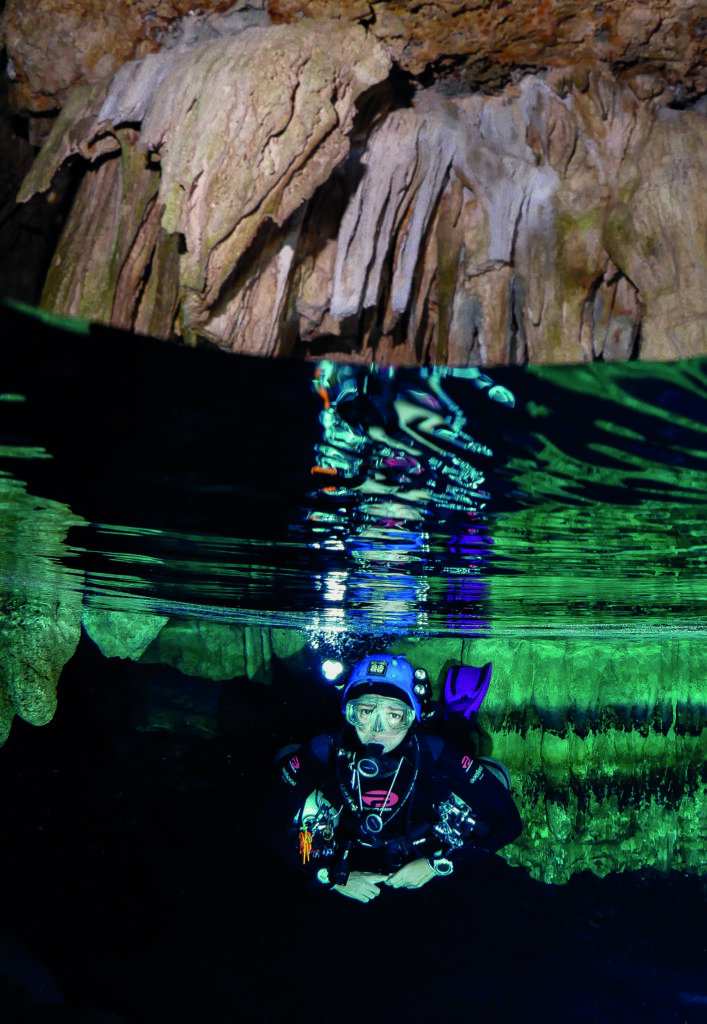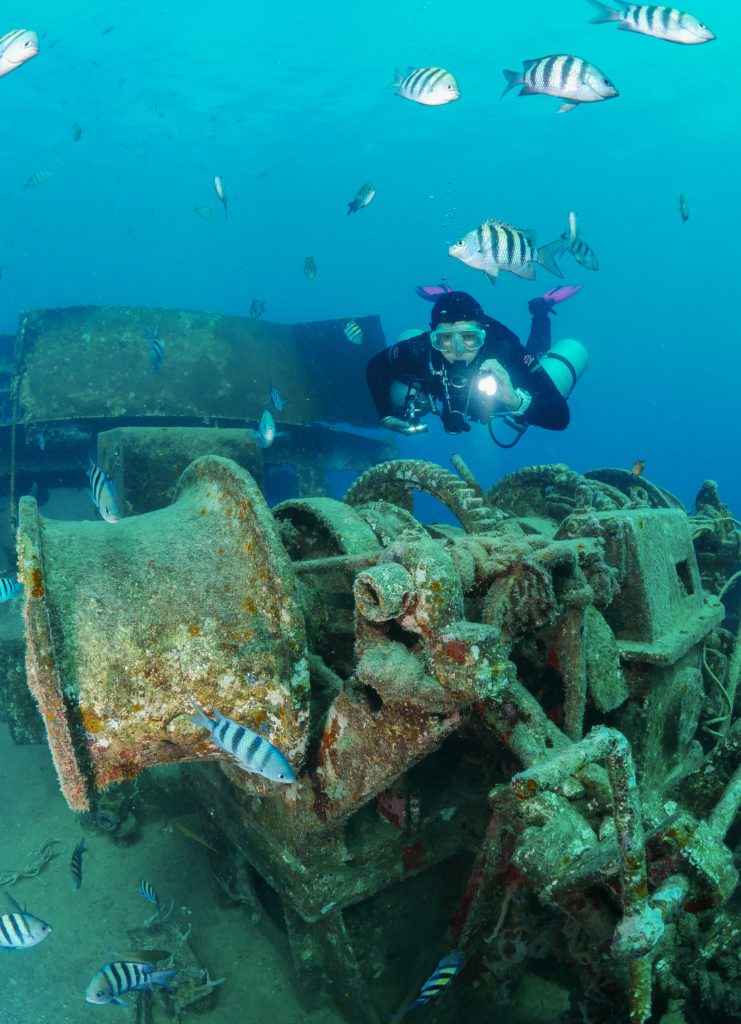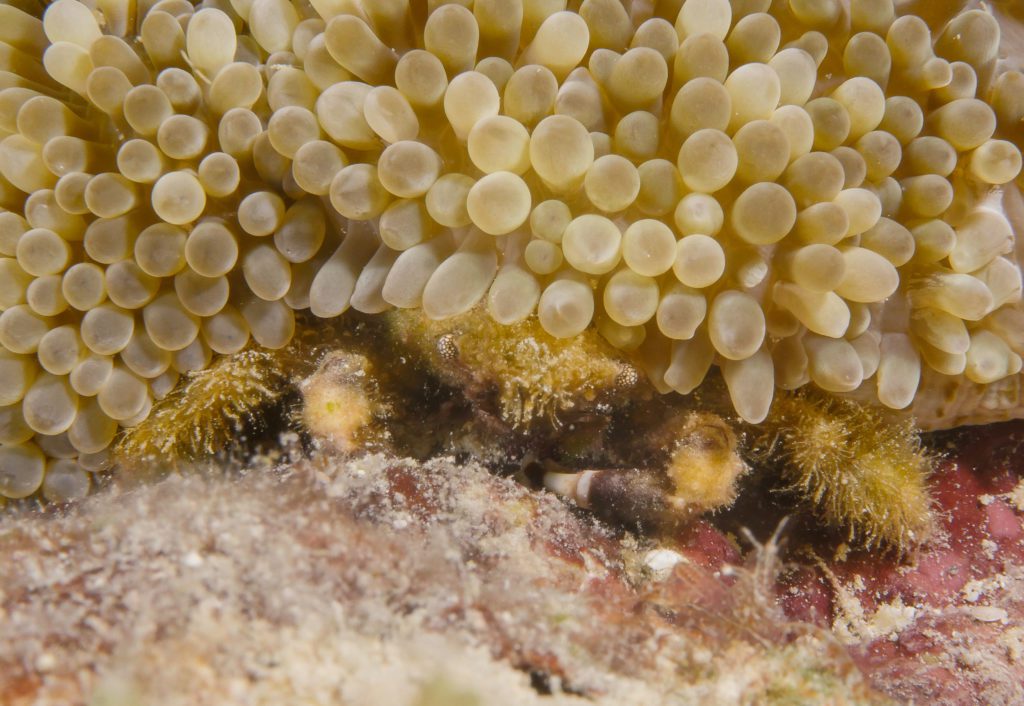David Jones is rather taken by the broad range of dive sites in this Caribbean giant, including colourful reefs, interesting wrecks and cave dives accessed via most unusual ways.
If you have never been to the Dominican Republic, you have probably never had a reason to look at it on a map. When you do, the first thing that strikes you is the size of the place. Second only to Cuba in terms of surface area, this tropical paradise dwarfs the majority of the islands that we normally associate with the Caribbean.
Not surprisingly, it is geographically diverse; it has the highest mountain and the largest lake in the Caribbean, as well as lush rain-forests and arid semi-desert plains. So with the Atlantic to the north and east, and the Caribbean Sea to the south, I snapped up the opportunity to see what the most-visited island in the Caribbean had to offer under the water as well as above it.
My journey began after a direct flight from London with British Airways. I stayed at the Catalonia Resort in Bayahibe for the duration. One great thing about this country is there is no shortage of fantastic all-inclusive hotels.
Having landed in Punta Cana, mine was only an hour’s drive and I was on the beach – I do love convenience. Even more convenient was my dive company for the week, Pro Dive International Dominican Republic (www.prodiveinternational.com/dominican-republic/), were based at the resort!
I had done a bit of research, but I didn’t really know what to expect, so my brief to the dive company was simple – show me the underwater diversity of the Dominican Republic. With the challenge delivered, my first dive was to Parque, one of a couple of what can best be described as underwater museums, just off the beach.
Old cannons and muskets are scattered on the shallow seabed, but these 17th Century artefacts were not lost there. They had been taken there by the department of culture, along with explanatory plaques, providing points of interest for divers. On a second site, less than two minutes boat journey from the resort, another a half dozen cannons and some old anchors lay in 6m of water among the coral. While I was taking a couple of photos, some open water diver students descended with their instructor. What a wonderful place to begin your underwater journey, kneeling among history and nature.
Being September, it was the middle of the rainy season, so not surprisingly the visibility was not exceptional, but it was okay. First observations were that the coral was healthy, but like the majority of the Caribbean, many of the large predatory species of fish are noticeably absent on the inshore reefs.
I spent some time exploring the macro life in these shallow dive sites and was pleasantly surprised. A number of species of shrimps and crabs hide among the coral heads and anemones and, if you take the time to look, there is plenty to see, so if macro is your thing, you will enjoy it. What was very encouraging is a local coral garden initiative between all of the dive centres along the coast and Fundacion Tropigas.
There are hundreds of reef balls just off the shore and active ‘farming’ of the most-resilient species in coral nurseries is supported by the dive centres. The nursery in Bayahibe is the fifth to be established and it really bodes well for the future of the reefs and diving in Dominican Republic.
My excitement at seeing cannons must have given away my interest in wreck diving and the dive centre were quick to oblige. First up was the wreck of the St George. Interestingly, it was not originally called the St George, but the M/V Norbrae, a 73-metre-long cargo vessel built in Scotland in 1962. Abandoned in San to Domingo, she was eventually towed to Bay ahibe and sunk as an artificial reef in 1999.
She was renamed the St George after the 1998 hurricane of the same name that hit the island. In 2008, Hurricane Hanna broke the ship just forward of the superstructure and she slid further down the reef. This is a really good wreck dive that offers plenty of exploration inside and out. There is plenty of life on it. The stern now lies at 34m and the bow is beyond recreational depths, but there is plenty to see for reasonably experienced divers and it is certainly worth a couple of visits.
During our surface interval, we motored leisurely the short distance from the St George to the entrance to Bayahibe harbour, where in shallow water you can find the Atlantic Princess. Some 25 metres long, she used to take tourists on cruises in the local area and having been retired was waiting to be sunk intentionally as an artificial reef. Unfortunately, in August 2008, Tropical Storm Faye had other ideas and dumped her in shallow water just off the beach. Being close to the harbour, visibility can deteriorate, but it is still an interesting little dive, great as a second dive and for beginners, with plenty of marine life
The dive center told me that some of the best wrecks are off the eastern tip of the country, so we went on a road trip to Bavaro before getting on a boat to explore the area outside of the reef. The Monica wreck was a wooden ship that sunk over 100 years ago. The wooden structure is long gone, but there are plenty of metal remnants that are well worth exploring.
At 12m, this is another dive that is good for any level of diver. We motored further along the coast beyond the airport runway at Punta Cana, where you will find the wreck of the Enriquillo RM-22. At 44 metres long, this vessel was donated to the Dominican Republic Navy by the United States in 1980. In 2006, she was retired from service and sunk as an artificial reef.
In spite of not having been there long, she is teeming with life. There are horse mackerel, bream and yellowtail snapper in numbers and regular sightings of barracuda and turtles. In this area, the Atlantic brings in strong currents, but also clear water, and visibility can be astonishing. Trying to hold my station doing a safety stop with a stiff current running from stern to bow, I could see the entire length of the ship. Coral has yet to take hold, but with very few divers venturing this far, with luck and time it will become something really special and even now is a stunning dive not to be missed.
It was time for a change and as much of the country is made of limestone, I headed inland to check out the underwater caves. I didn’t have to travel far. There are several caves in the Bayahibe region, including the Padre Nuestro and the El Chicho, both of which are within walking distance of each other and just outside of the town. Nearby Santo Domingo also has some lovely cave dives.
These are not overly complex systems like Mexico, with very few jumps and gaps, but logistics are sometimes interesting. They are not always easy to find so get local guidance and don’t be surprised if your gear is carried to the entrance by donkey, or you access the cave through someone’s back garden, next to a convenience store, or down some stairs under a nightclub. Yes, I’m being serious. Cave diving is a slowly growing part of the diving industry in the Dominican Republic and one that offers lots of opportunities to those qualified to make the most of them.
I wanted to go a little further off the beaten track and decided to check out some of the islands off the coast. First up was Saona island on the southernmost tip of the country. You could see the island from Bayahibe and we stopped off on the way at a site called El Peñon. Like Saona, this is part of the huge Eastern National Park that has been established in that area.
It is easy to see how a bit of conservation can go a long way underwater as well as on land; visibility, coral growth and marine life were far more prolific and the number of species increased dramatically. For the second dive we went closer to the island and the dive site was different again, with a gently sloping sandy reef that descends down to about 30m.
Nurse sharks often hide among coral arches and tunnels and green-spotted sting rays are everywhere. Spotted eagle rays are also seen quite regularly. From there I headed to Catolina Island off the port of La Romana. This was different again and was the only wall dive I did during my time in Dominican Republic.
My brief had been to take a look at the underwater diversity of the Dominican Republic and in the short time I was there, I discovered that it has much to offer. I didn’t have time to get to Samana Bay and the Haitises National Park in the north, a hotspot for migrating whales and a region that promises much. The cave diving was wonderful, and the Caribbean coastline offers predictably good diving. The wrecks are really great and accessible, and the islands of Saoma and Catalina provide even more variety and diversity.
The marine life doesn’t compare with Palau, and the wrecks are not as good as Chuuk, but that isn’t what the Dominican Republic is all about. It is about being a bit of everything, all bundled into a nice package that’s easy to get to on scheduled and package tour flights. It has plenty of good hotels that won’t cost you an arm and a leg, as well as plenty of opportunities for non-divers. To top all that, it has some really nice diving with plenty of variety no matter what your level of experience. I can’t wait to go again.
They are not always easy to find so get local guidance and don’t be surprised if your gear is carried to the entrance by donkey, or you access the cave through someone’s back garden, next to a convenience store, or down some stairs under a nightclub
Coral has yet to take hold, but with very few divers venturing this far, with luck and time it will become something really special and even now is a stunning dive not to be missed
Pro Dive International Dominican Republic: - The Dominican Republic operation of PADI Career Development Centre Pro Dive International, which also has highly rated centres in Mexico, offers reef, wreck and cave diving, not to mention the opportunity to snorkel with humpback whales, as well as dive training from beginner through to dive professional. https://prodiveinternational.com/dominican-republic/.
